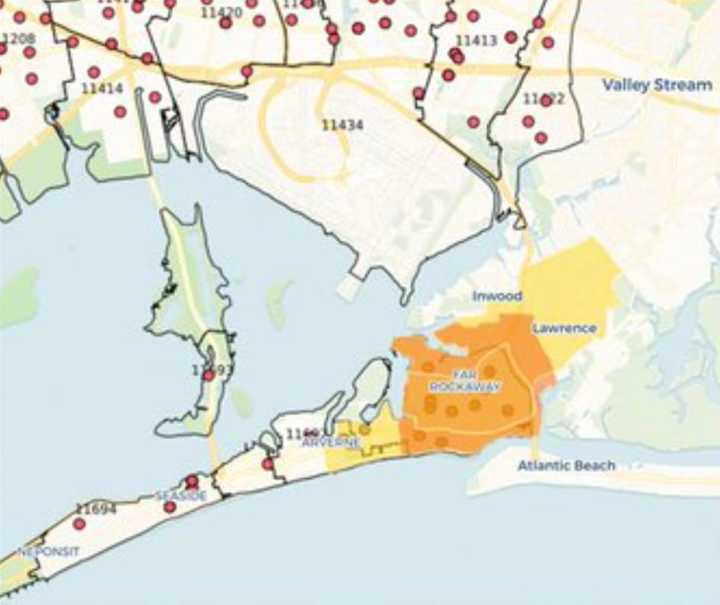Some communities in Nassau County have been designated as “warning zones” as part of New York Gov. Andrew Cuomo’s new cluster action initiative to address the rapid spread of COVID-19 in some areas of New York.
Health officials have been identifying hotspots for the virus, labeling them as either a "red zone,” which is the cluster itself, nearby areas as an “orange zones,” which are warning zones, and yellow zones, which are precautionary zones.
On Long Island, parts of Nassau County in Inwood and Lawrence have been designated as orange zones, with other parts in the yellow zone, as well as most of Cedarhurst.
In orange zones, houses of worship will be limited to 33 percent capacity, with a 25 person max; mass gatherings are limited to 10 people indoors or outdoors, non-essential, high-risk businesses are to close, dining is limited to outdoors with four people per table, and schools will transition to remote learning.
In the yellow zone, houses of worship can open up to 50 percent capacity, gatherings are limited to 25 people indoor or outdoor, businesses will remain open, dining will be open, though there will be a max of four people per table, and schools will be open with mandatory weekly testing for students and staff.
The restrictions went into place as of 12:01 a.m. on Friday, Oct. 9, and will be in effect for 14 days, at which point Cuomo will consult with health officials and reassess the situation at COVID-19 hotspots.
Nassau County Laura Curran said that while most have been compliant, they are ramping things back down to ensure that COVID-19 cases don’t spike on Long Island.
“By in large, the compliance has been very, very good, we do see those orange and yellow zone in the Five Towns and I've been speaking with leaders of the Orthodox community, elected officials and we want to make sure everyone continues to do what they need to do.”
Cuomo said that the state’s strategy is to “crush the cluster and stop the spread” in justifying his plan to take additional action in those clusters where there has been a spike in COVID-19 cases.
“Step one, you take the most dramatic action within the cluster itself where you have the highest density of cases,” he said. "Understanding that the people in that cluster interface with the surrounding communities, take additional action in the communities surrounding the cluster.
“Then as a precautionary measure, take action in the communities that are outlying that area.”
Click here to follow Daily Voice Brentwood and receive free news updates.
